

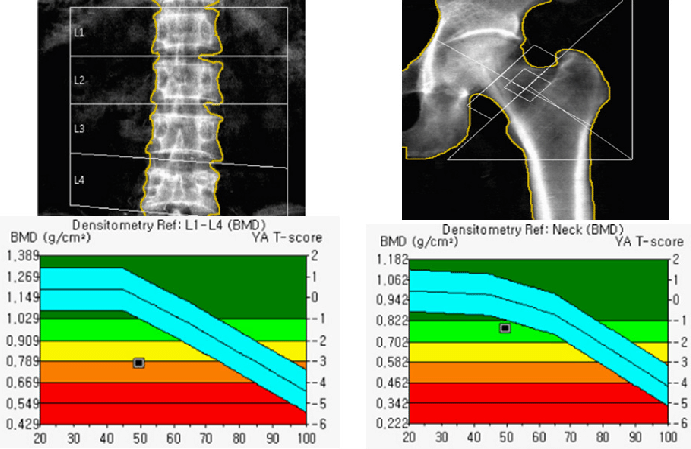
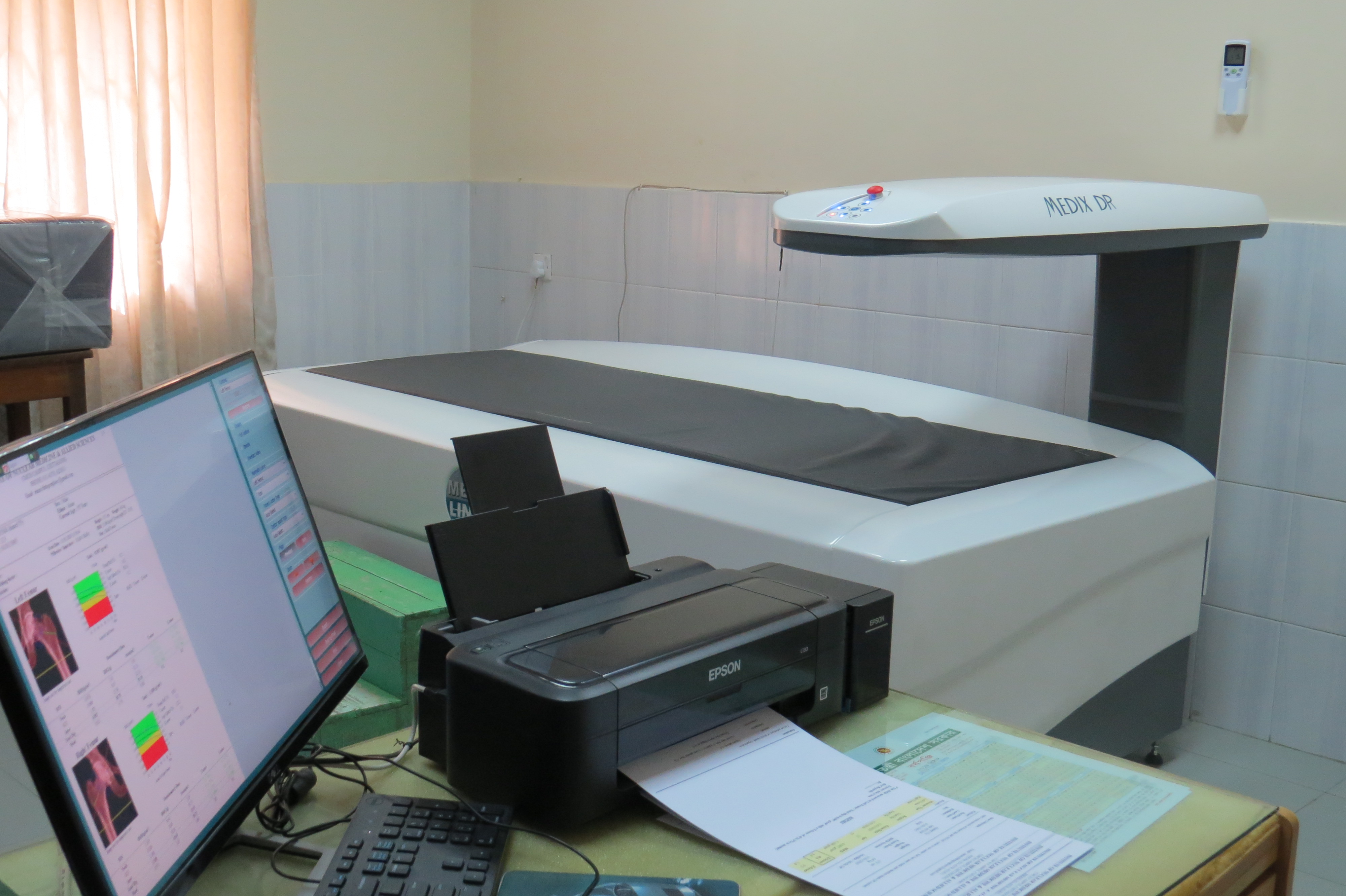

Every Saturday to Thusday at 8.00am -2.30pm
Except Friday and all government holiday
Every Saturday to Thusday at 7.30 AM
Except Friday and all government holiday
| Invastigations | Rate | Preparation |
|---|---|---|
| BMD (Bone Mineral Density) Study | 2500 | Get Appointment |
| BMD Whole Body | 5000 | Get Appointment |
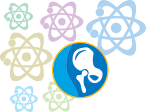
A bone mineral density (BMD) test can provide a snapshot of your bone health. The test can identify osteoporosis, determine your risk for fractures (broken bones), and measure your response to osteoporosis treatment. The most commonly used BMD test is called a central dual-energy X-ray absorptiometry, or central DEXA test. It is painless – a bit like having an X-ray. The test can measure bone density at your hip and lumbar spine.
Despite ongoing advances in osteoporosis detection and treatment options, studies suggest that osteoporosis (a systemic skeletal disease leading to fracture, morbidity, and excess mortality) continues to be poorly managed, undertreated, and under diagnosed. The increase in clinical information related to osteopenia (a less severe level of bone loss) and osteoporosis, as well as recent press coverage, has resulted in heightened awareness among health care professionals and the public that this critical issue must be addressed, and that current approaches to osteoporosis management must be improved.
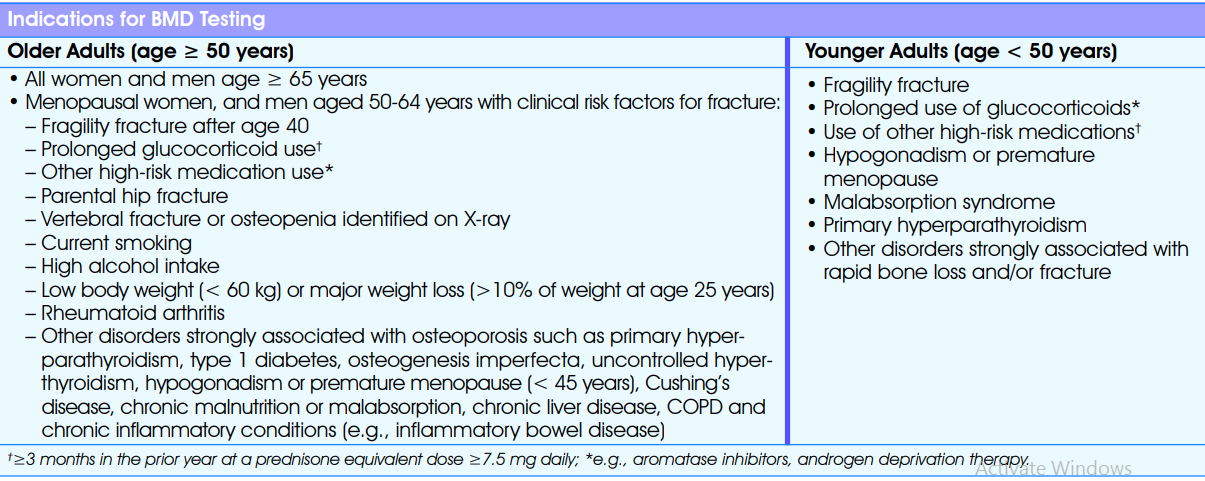
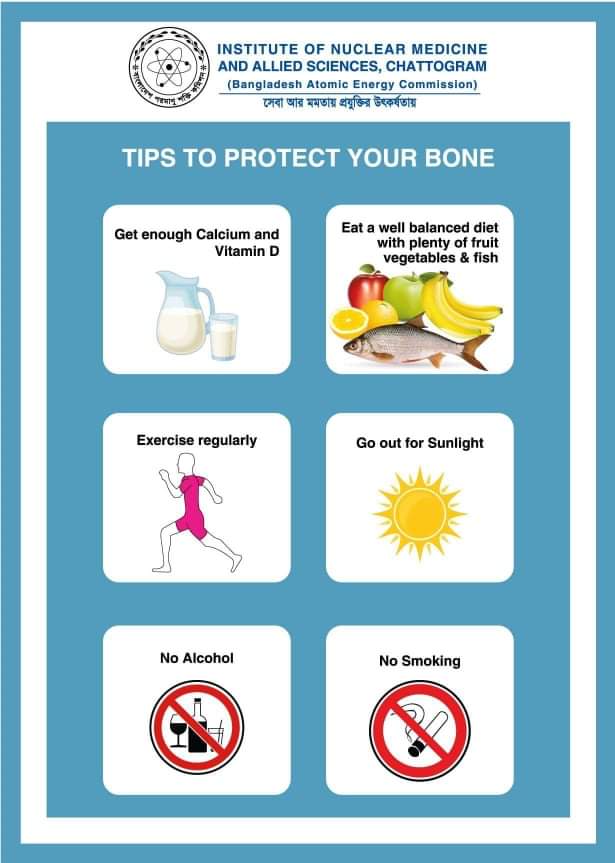
"Osteo" means bone, and "Porosis" means Porous. When you have osteoporosis, your bones have become thin, weak and porous (like a sponge) instead of being strong and dense (like a brick). Because of this, your bones have a higher chance of breaking, especially if you fall.
Osteoporosis is also called "the silent thief" because it slowly "steals" your bone intensity over many years without giving you any signs or symptoms. Many people don't even know they have osteoporosis untill a bone breaks or fractures.
The current corner stone for the diagnosis and treatment of osteoporosis is the accurate assessment and optimal reporting of bone mineral density (BMD) results.
BMD remains the most readily quantifiable predictor of fracture risk for untreated individuals who have not yet suffered a fragility fracture. Currently, central dual-energy X-ray absorptiometry (DEXA) is considered to be the preferred method for measuring BMD.
The low bone mass that characterizes osteoporosis causes an increased susceptibility to spontaneous or a traumatic bone fracture. As a person with low bone mass, you can take steps to help slow down your bone loss and prevent osteoporosis in your future. Your doctor will want you to develop – or keep – healthy habits such as eating foods rich in calcium and vitamin D and doing weight bearing exercise such as walking, jogging, or dancing. In some cases, your doctor may recommend medication to prevent osteoporosis.
Bone density scans are very simple & safe. They use a much lower level of radiation than standard X-rays. The amount of radiation used during a bone density scan is very low and less than 2 days exposure to natural background radiation (NBR). Despite being very safe, bone density scans and X-rays are not recommended for pregnant women, as X-rays can damage an unborn child.
Brochure for BMD: PDF/Print
Contact us now to schedule an appointment.